Sunday Dinners comes to us from our own chef/photojournalist/farmer/father figure Tom Hirschfeld, featuring his stunning photography and Indiana farmhouse family meals.
Today: How to make your own sausage with just a sharp knife, in step-by-step photos. (Then use it to season everything in sight, starting with polenta.)
It is obvious to me I come from a long line of pork eaters.
It's not that I need some sort of familial approval for my love of the beast, because I don't. I claim it as my heritage but I'll just say it anyway for clarity: I...love...pork.
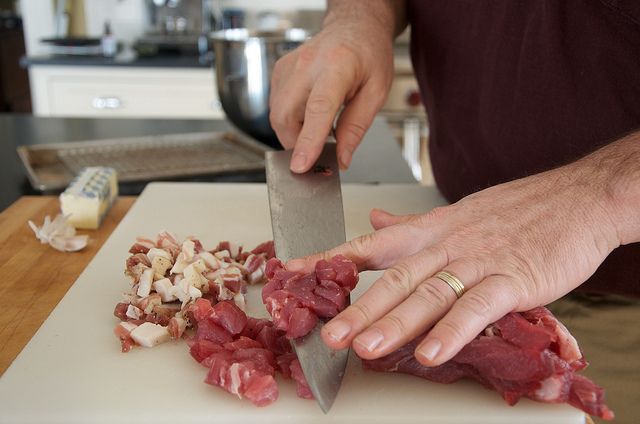
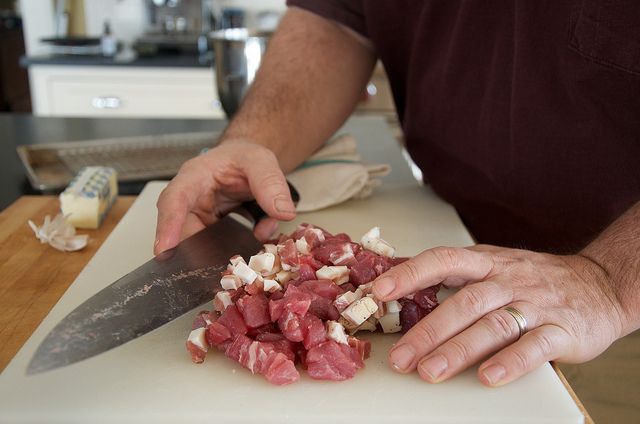
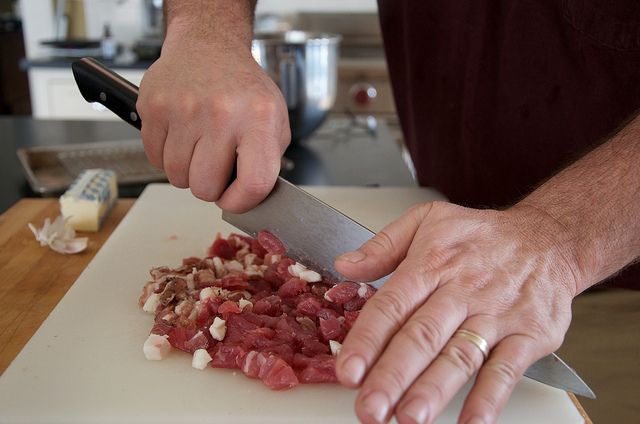
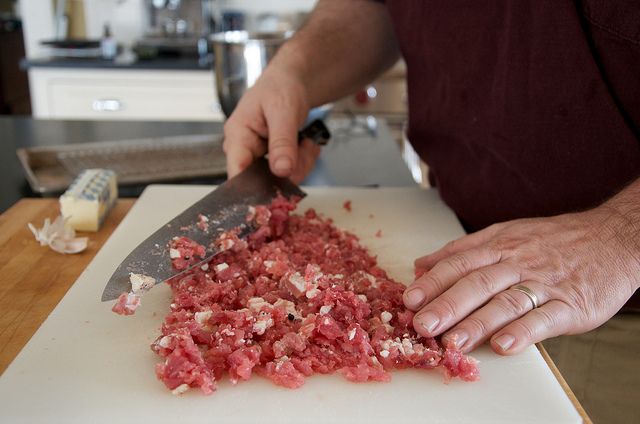
I love pork for its possibilities, its versatility, and most importantly, its flavor. From snout to hocks and bacon to ham there are more uses for the pig than any other animal I know. And one of my favorite uses is as a seasoning. What I mean by seasoning is not simply tossing a couple of strips of bacon in with the green beans and calling it a day. No, the pork isn't there for a cameo but instead has an important supporting role.
More: DIY Merguez + 4 Ways to Use it
Don't get me wrong. I enjoy a good pork dinner. Something like Edna Lewis' Boiled Pork (think Pot au Feu) really floats my boat. But as I try to reduce the amount of animal protein I consume, I often look to the example of Italian ragus or Asian dishes where animal protein, quite literally, plays second fiddle to the grains or noodles on the platter.
Sure, this is done for economy, just like adding bread or oats to meatloaf, but who doesn't like saving a few bucks or at the very least feeding more mouths for the same price? Not only that, but if you buy less quantity then you can afford better quality.
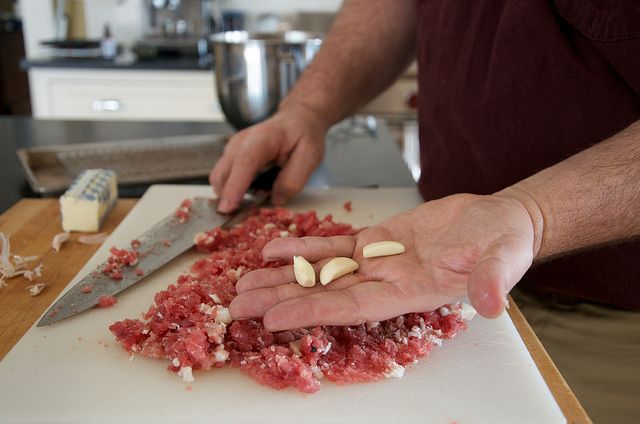
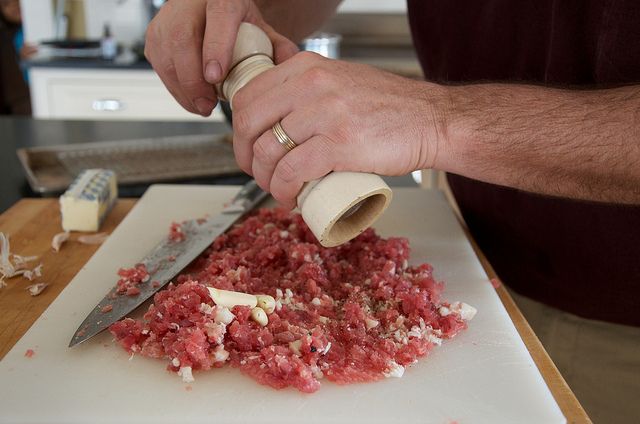
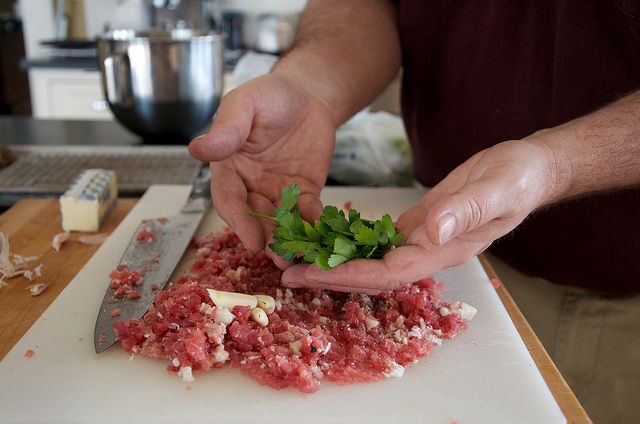
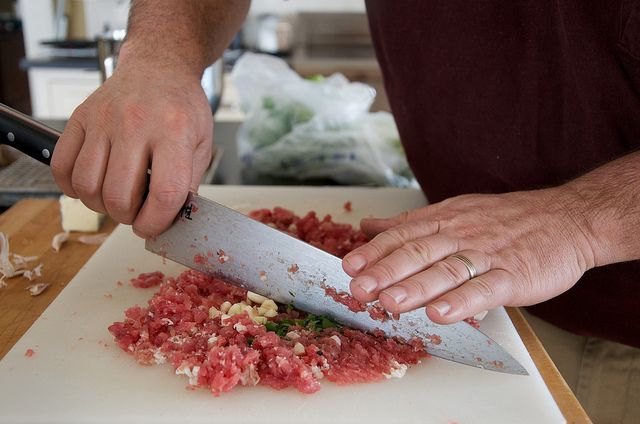
When it comes to pork, quality matters. If you buy pork that is enhanced with sodium triphosphate, a common practice at big box stores, it will be difficult to get it to caramelize and honestly, it will taste bland. It is done to help the meat retain moisture, but I think they add it because the producers have made the pork too lean.
If you buy pork raised with a higher fat content, you don't need the moisture retainer. Not only that, but when pork is raised in a more sustainable fashion, it just tastes better, because the pig ate better. When I bite into good pork, pork that tastes like it should, it immediately transports me to my grandparents' farm, sitting outside under a shade tree eating dinner on a beautiful summer's eve.
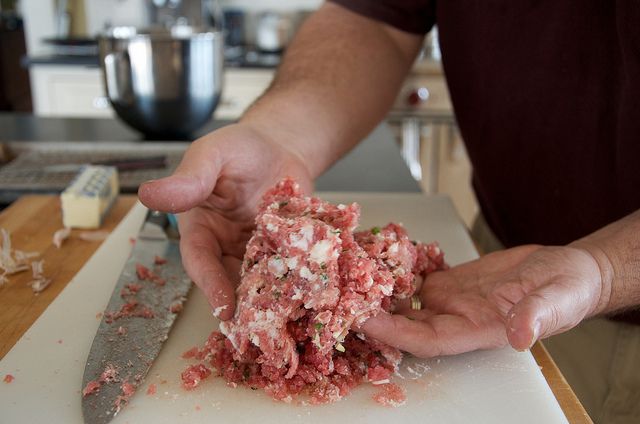
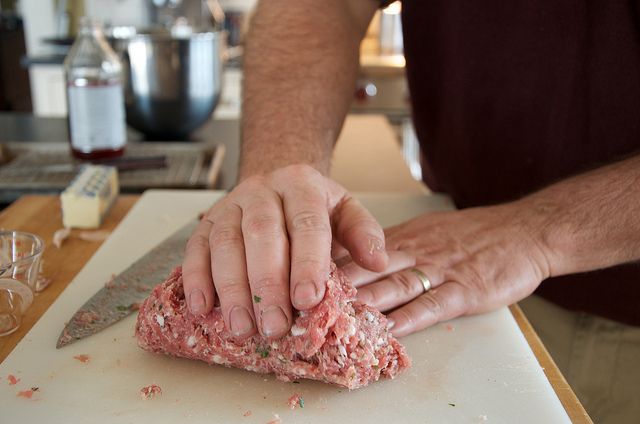
Over the years, I have had different fascinations with different types of cured pork. The list of possibilities is big: you have bacon, ham, Tasso, Serrano, prosciutto, pancetta, guanciale, on top of any number of sausages -- just to name a few. All can be used as seasonings.
The wonderful thing is there are many books that will teach you how to cure many of these products at home (Michael Ruhlman's Charcuterie comes to mind) and many of the processes are surprisingly simple. In fact, no special equipment is required other than a good sharp knife (which I don't consider special equipment).
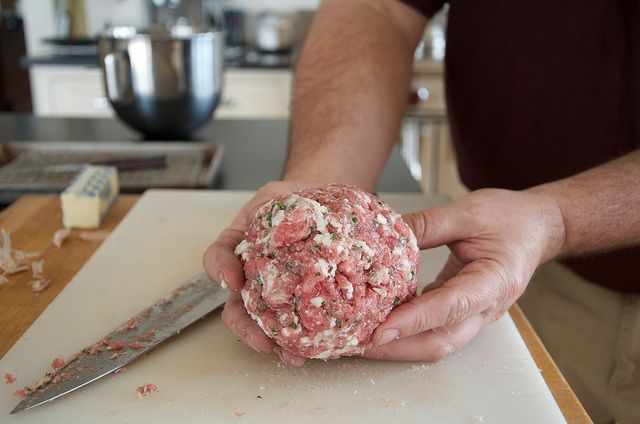
Other ways to season with pork:
- Use thinly sliced prosciutto as a wrap for all kinds of things, from fish to pork tenderloin.
- In the midwest anyway, German meat markets often carry the smoked pig skin trimmed from double smoked bacon -- use the skin for barding. It gives a pork rib roast a mild and wonderful cured flavor as well as keeping the roast moist during cooking.
- I will often roast off a pork shoulder for the sole purpose of shredding it, and then package it into 1/2-pound portions for the freezer. Then when I want noodles or a rice dish l will simply pull a package from the freezer and I am halfway to dinner.
Polenta with Peas and Pork Sausage
Serves 6 to 8
For the sausage:
12 ounces pork tenderloin, loin or sirloin
5 ounces pancetta, cut into small cubes
3 garlic cloves, peeled, the number depends on their size and if they are large, cut them in half
A handful of flat leaf parsley leaves
A scrape or two of fresh nutmeg
2 teaspoons red wine vinegar
Kosher salt and fresh ground black pepper
For the ragu:
1 recipe Carlo Middione's Polenta Facile
1 recipe homemade sausage, from above
1/2 cup yellow onion, small dice
1/2 cup carrots, small dice
1 teaspoon dried thyme
1/2 teaspoon dried rosemary
1 bay leaf
2 tablespoons tomato paste
1 garlic clove, minced
1/2 cup dry white wine
2 cups pork or chicken stock
1 1/2 cup fresh or frozen peas
Chopped parsley and chives
See the full recipe (and save and print it) here.
Photos by Tom Hirschfeld
Read more:
All About Cured Meats
Smoking Authentic Salami at Home
Bacon-Wrapped Pork Loin


See what other Food52 readers are saying.